On September 25th, Tesla released updates for Tesla OS v2021.32.22 and Tesla App v4.1 simultaneously in the United States, adding two features: the “FSD Full Self-Driving Beta version application button” and the “Safety Score Beta version.” Based on these features, Tesla has taken a big step forward in data-driven business.
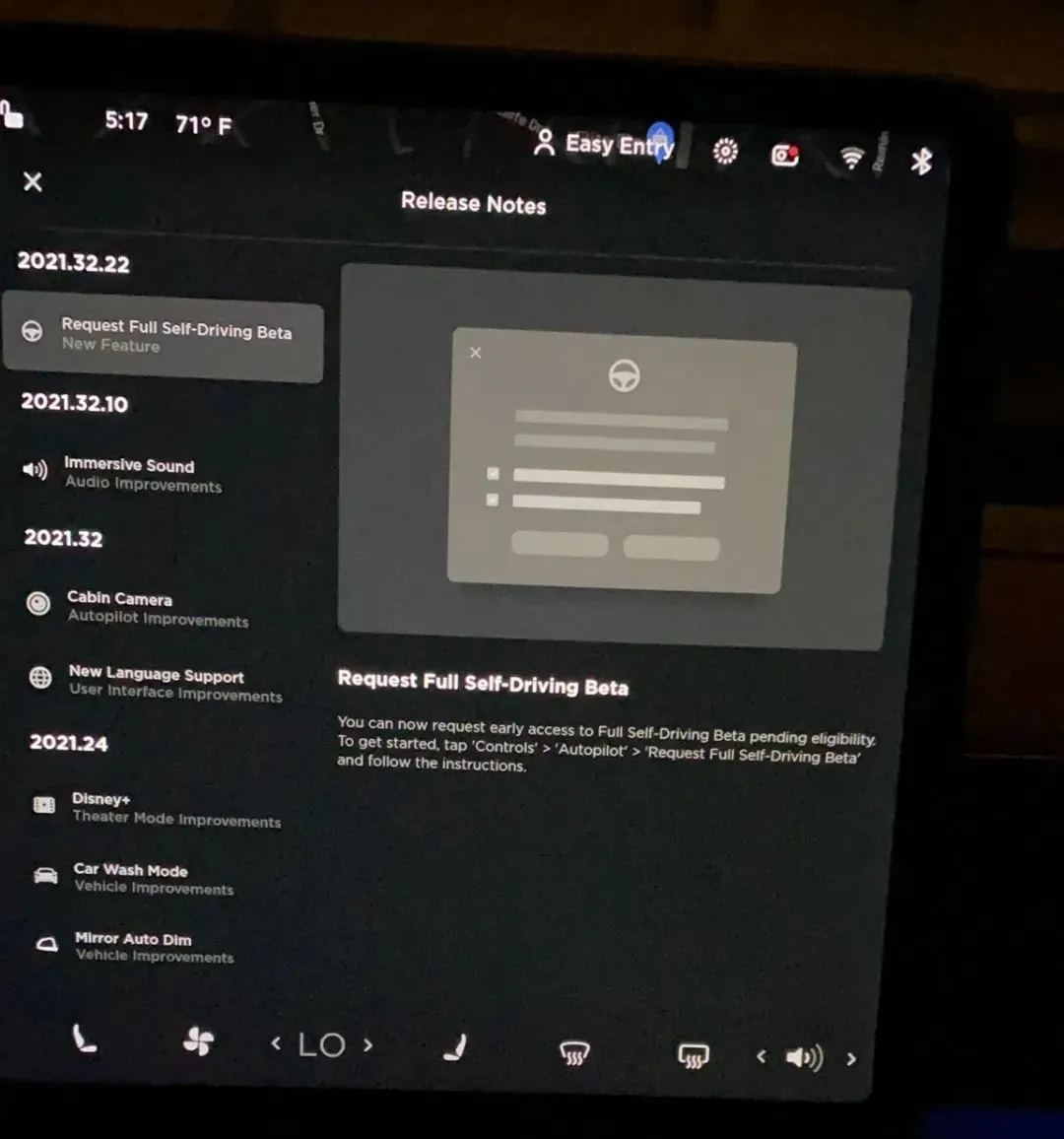
In short, Tesla owners in the United States who have chosen to install FSD can click the “Apply for Full Self-Driving Beta” button after updating their system to v2021.32.22. The built-in “Tesla Insurance Calculator” will run the “Safety Score Beta version.” Once the driver’s driving habits are determined to be safe and reliable for seven consecutive days, the vehicle can receive the FSD Beta push update.
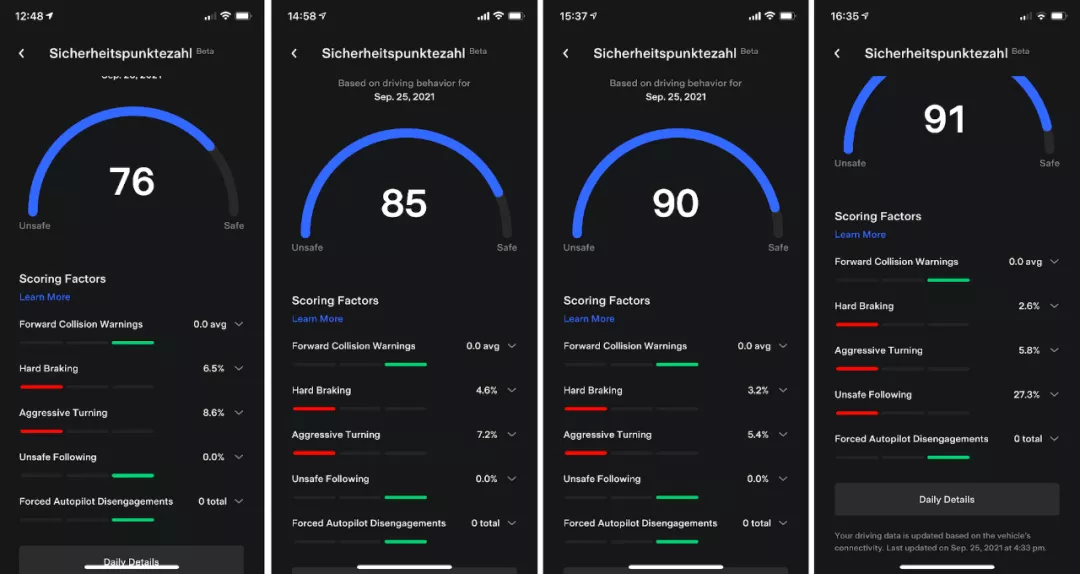
From the full-stack algorithm of FSD, the expansion of public beta users, to the resulting Tesla UBI (Usage-Based Insurance) auto insurance, the entire loop of Tesla’s business has turned to data-driven machine learning. With this move, Tesla has entered into a comprehensive competition for upgrading.
Safety Score Beta version
The reason the “Safety Score Beta version” is introduced at the beginning is that both the “FSD Full Self-Driving Beta version application button” and “Tesla Insurance” are based on the “Safety Score” business. So, what is the “Safety Score”?
According to Tesla, the “Safety Score” evaluates the driving behavior of Tesla owners based on five safety-related indicators. Tesla will predict the likelihood of an accident in which the driver is involved in the future based on these data.
The purpose of the “Safety Score” is to provide transparency and feedback on the driver’s behavior. The score ranges from 0 to 100, and the higher the score, the safer the driving. Tesla believes that most drivers should have a score of at least 80 points.
So, what are the five “safety-related indicators”? There are no other dimensions to control a driver’s operation of the vehicle apart from lateral and longitudinal control. Lateral control is mainly achieved by steering left and right, and longitudinal control is achieved by accelerating and braking. Tesla’s “Safety Score” also revolves around these three operational dimensions, represented by the following five indicators:
- Forward Collision Warning Trigger Rate per Thousand Miles (referred to as A)An excessively lengthy but easily understood noun is defined as the number of times Tesla’s Autopilot system triggers a “frontal collision warning” when driving 1,000 miles without driver intervention.
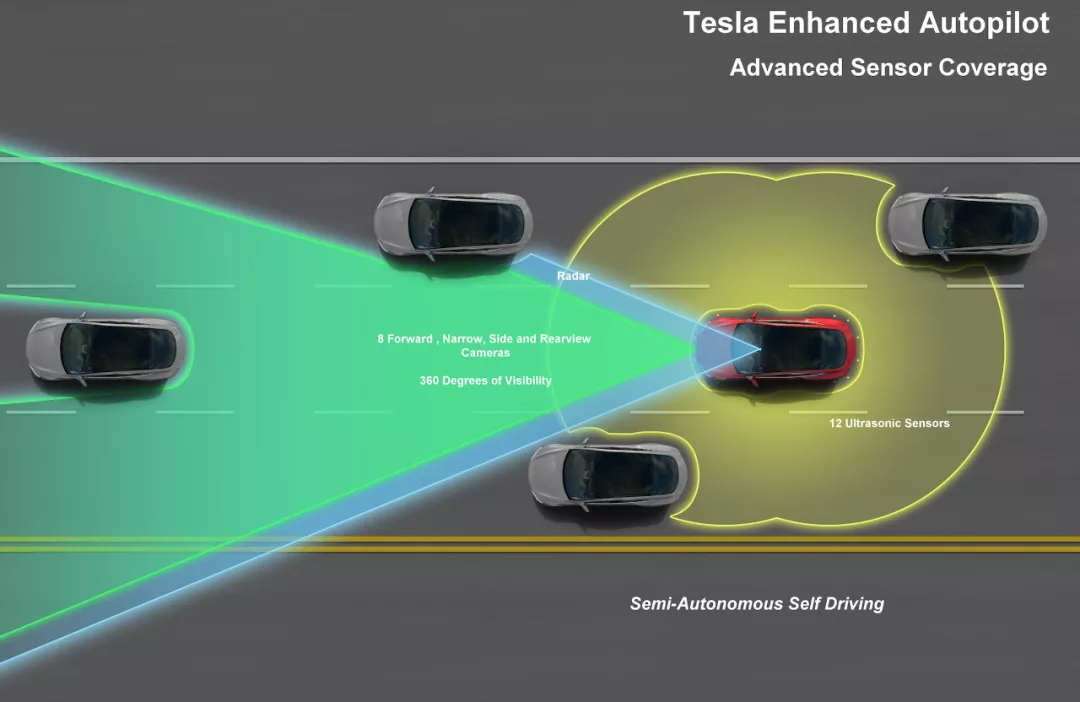
B refers to hard braking, which is defined by Tesla as the ratio of the deceleration rate during braking exceeding 0.3g (equivalent to the speed decreasing by more than 6.7 mph (10.78 km/h) per second) to the ratio of the deceleration rate exceeding 0.1g (equivalent to the speed decreasing by more than 2.2 mph (3.54 km/h) per second) during braking throughout the driving trip.
C refers to rapid turning, which is also a ratio. Tesla defines it as the ratio of the left/right acceleration of the vehicle exceeding 0.4g (equivalent to the vehicle’s speed increasing by more than 8.9 mph (14.32 km/h) to the ratio of the left/right acceleration exceeding 0.2g (equivalent to the vehicle’s speed increasing by more than 4.5 mph (7.24 km/h) per second) during driving trip.
D is a dynamic value, and Autopilot analyses the driver’s speed, the preceding car’s speed, and the distance between the two vehicles. It is calculated by the length of time required for the current vehicle to come to a sudden stop and for the driver to react and stop. The definition of D is the ratio of response time under 1 second to response time under 3 seconds. Additionally, D is only recorded when the car’s speed is 50 mph (80.47 km/h).
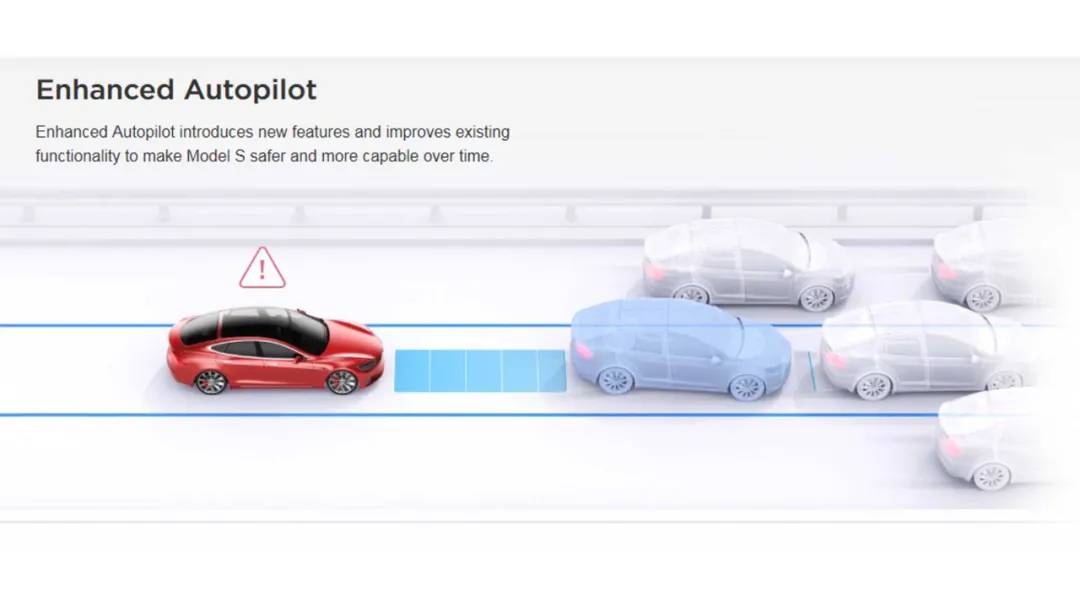
E refers to Autopilot forced exit. As most Tesla owners know, Autopilot will exit if it fails to receive a response from the driver for three consecutive warnings. After the driver removes both hands from the steering wheel or drives distractedly, the system will issue a warning. E is the simplest of the five indicators: if Autopilot exits compulsorily within driving, E is recorded as 1, otherwise it is recorded as 0.
Tesla has a Predicted Collision Frequency (PCF) formula that includes the above five values A, B, C, D, and E. Inputting these values into the following formula will yield the PCF value.
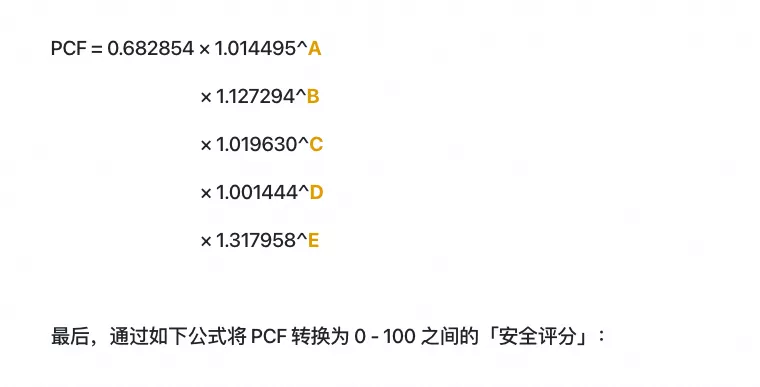 ## Safety Score
## Safety Score
Safety score = 115.382324 – 22.526504 × PCF
You may wonder how these eight precise numbers after the decimal point were derived. Tesla stated that the current formula is based on a statistical model of 6 billion miles of fleet data.
As you can see, this “safety score” is not a simple metric. Accurately identifying drivers with good driving habits based on the existing 6 billion miles of fleet data does not seem to be an easy task. In fact, based on the feedback from the first group of Tesla owners, Tesla underestimated the difficulty of this task.
How is FSD Beta Testing Scaling Orderly?
Since Tesla’s first public beta testing of FSD Beta on October 21, 2020, a widespread skepticism about Tesla FSD is that the size of the FSD Beta testing fleet has been hovering around 2,000 vehicles. It hasn’t entered more states in the United States, nor has it been running on more FSD models.
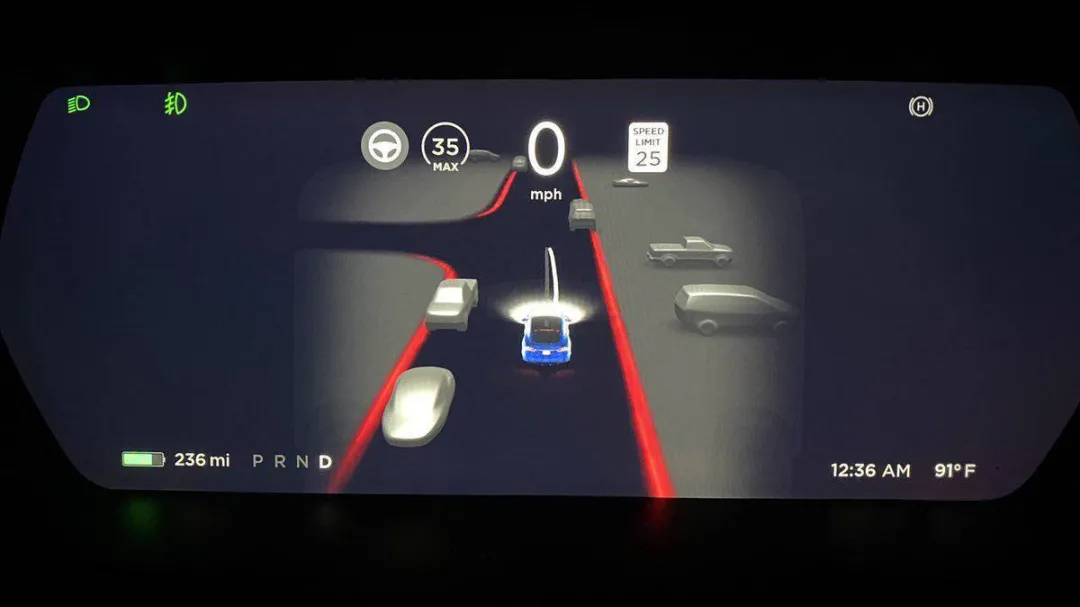
This is far from what the public expects from Tesla FSD. The world does not need another autonomous driving system with severely limited scalability. In the past five years, companies like Waymo and Cruise have not brought us surprises. Tesla is almost the only mainstream autonomous driving player that talks about scalability in automatic driving until 2021.
However, behind the doubts, Tesla has been iterating the full-stack algorithm of FSD Beta with almost crazy efficiency. It is not an exaggeration to say that after more than 20 major and minor version iterations, FSD Beta 10.1 has undergone a transformation. This can also be seen from the Tesla AI Day held on August 19.

Today, FSD Beta has reached an awkward situation. On the one hand, Tesla needs more and richer scenarios to accelerate algorithm iteration, which means a larger scale of public beta testing fleet. On the other hand, although FSD Beta has made significant improvements, it is not good enough, at least not enough to allow Tesla to confidently push it to every FSD vehicle.
In this technical no man’s land, regulatory agencies around the world, including the United States, have a loose regulatory attitude towards autonomous driving technology, but they have not provided detailed management measures for how autonomous driving systems can be expanded to every vehicle in an orderly, safe, and controllable manner.This is the dilemma of technology running ahead of regulation. The first batch of 2,000 selected beta testers were relatively easy to find, but what about the next 20,000, or even 200,000? Today, Tesla’s global fleet exceeds 2,000,000 vehicles, posing a challenging question.
Tesla then developed a safety rating beta based on statistics derived from its fleet data of 6 billion miles driven. The Autopilot, Cabin, and App teams worked together to push updates for Tesla OS v2021.32.22 and Tesla App v4.1 to FSD drivers in the United States.
However, just like the first-gen summon beta, the first-gen assisted driving (NoA) beta, and even the first-gen FSD beta, the experience of the first-gen safety rating was poor, exceeding the expectations of many drivers.
For example, well-known Tesla bloggers @TeslaJoy and @Scott Wainner both point out that drivers who have not violated the five indicators mentioned above will have their scores deducted if they drive a certain distance based on Autopilot or NoA observations of “sharp braking,” “sudden turns,” or “unsafe tailgating.” Both bloggers exposed issues with the algorithm since even Tesla’s autonomous driving algorithm cannot pass their “safety rating” test due to the beta version’s narrow application.
Due to the overly strict standards of the safety rating, many drivers are cautious to avoid point deductions, with Electrek even offering the title: “Slow Teslas everywhere.”
Famous race track enthusiast and Model S Plaid owner Dragtimes was given a low score of five even when driving without any takeovers.Translate the following Chinese Markdown text into English Markdown text, in a professional way, preserve the HTML tags inside Markdown, and only output the result.
Another Tesla owner, Oliver Cameron, Vice President of Cruise, a self-driving company under General Motors, said that if a self-driving product that is dedicated to achieving from A to B puts more pressure on you at runtime than driving yourself would, then it may not be a good product.
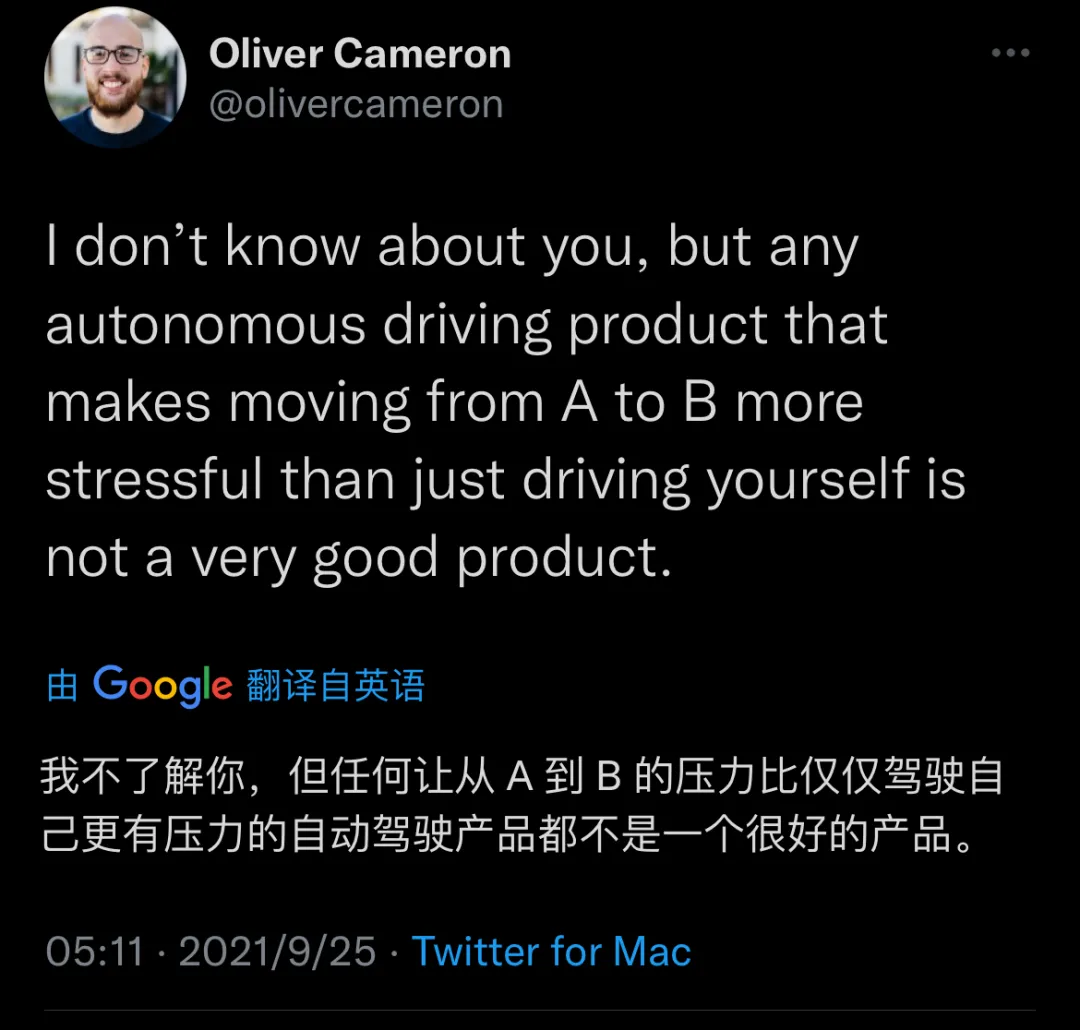
The Imagination of “Safety Rating”
The imagination of “safety rating” is not just that. The essence of “safety rating” lies in the ability to predict the accident rate of vehicles in the future by decomposing and statistically analyzing the driving behavior of the driver as finely as possible.
The richer the driving data and the more detailed the driving scenarios, the higher the predictive accuracy of “safety ratings.” Elon once said that the core of competing with traditional automobile insurance companies lies in the accuracy of information. Thanks to Tesla’s position as the world’s largest intelligent electric vehicle manufacturer, Tesla owns the richest and most detailed fleet data in the industry. From a business perspective, Tesla’s impact on car insurance companies is dimensional reduction.
Tesla’s entry into the car insurance field is a much more important new business than the orderly expansion of FSD internal testing, which is why the main body operating “safety ratings” is called the Tesla Insurance Calculator.
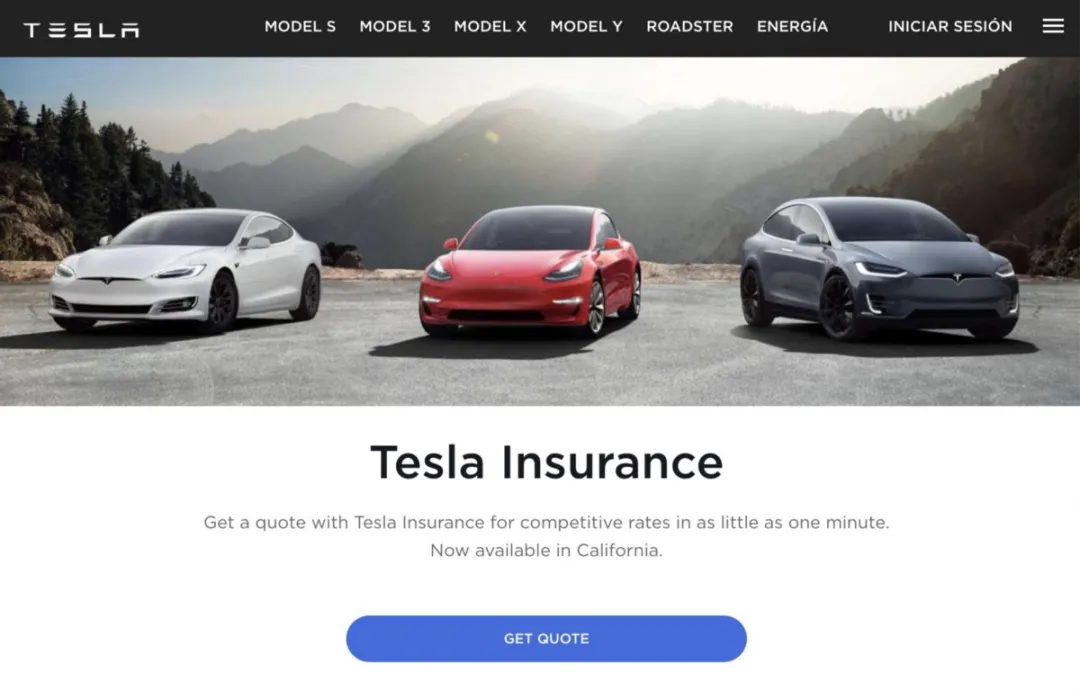
In addition, the full-scale launch of Tesla insurance will also have the potential to educate drivers in a reverse direction, further reducing accident rates. Elon believes that people will learn to drive more prudently to lower their premiums. “It’s like…if you want to pay more for insurance, you can (drive with higher risk), but if you want to pay less, please don’t be so crazy. People will make choices.”
Of course, all of this is based on Tesla doing it well enough. Judging from the current overwhelming criticism of “safety rating,” existing car insurance companies not only didn’t feel pressured, they even laughed out loud.
But Tesla is not flustered at all. Not only is Tesla not panicking, but Tesla probably anticipated such feedback before the push.
Because Tesla not only mentioned in the blog that “as we gain more users and data insights, we hope to iterate on the formula in the future,” but also on the day of launch, Elon specifically mentioned that it’s still a very beta version, and “safety ratings” will evolve over time to more accurately predict accident rates.
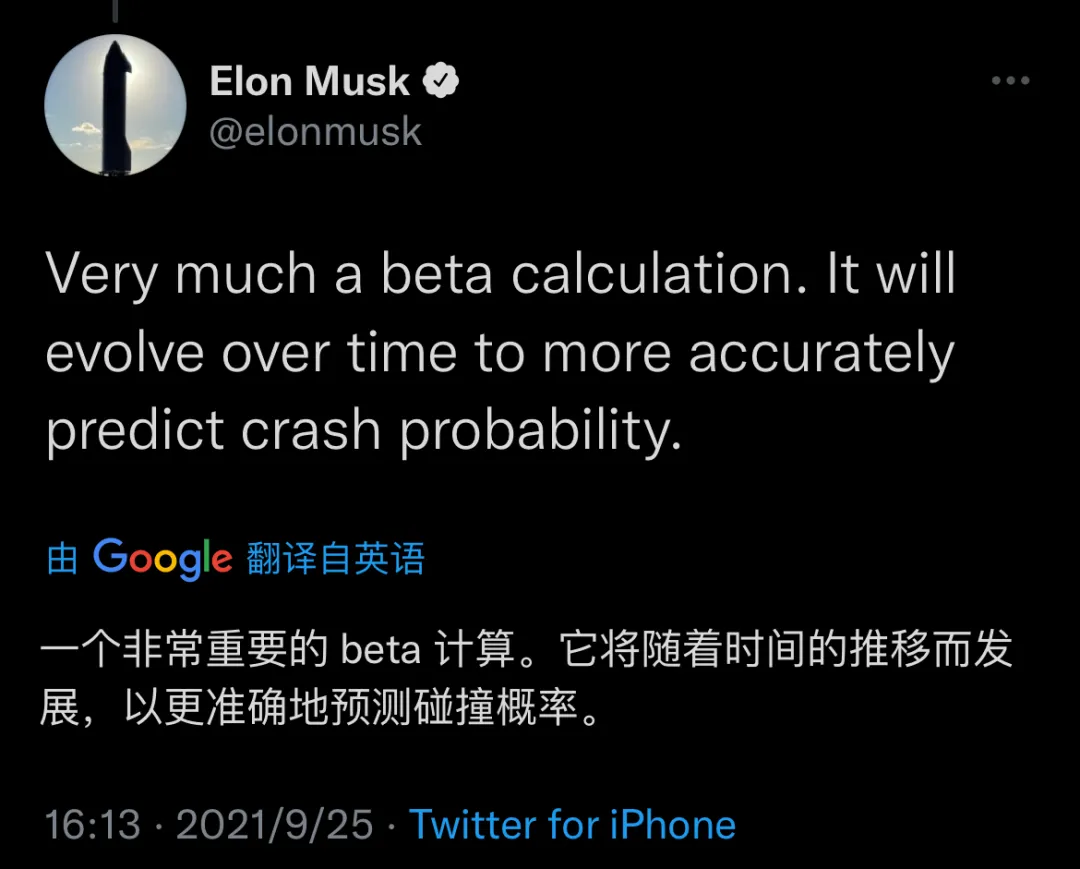 Actually, Tesla’s layout for “safety rating” was even earlier than FSD Beta’s public testing. In Tesla’s Q2 earnings conference on July 22, 2020, Elon openly recruited “revolutionary actuaries”:
Actually, Tesla’s layout for “safety rating” was even earlier than FSD Beta’s public testing. In Tesla’s Q2 earnings conference on July 22, 2020, Elon openly recruited “revolutionary actuaries”:
“I particularly appreciate some energetic actuaries, I respect the profession of actuaries very much. Your math is excellent, please join Tesla, especially if you are frustrated with the slow pace of the insurance industry and want to make a change, this is where you should go, we need revolutionary actuaries.”
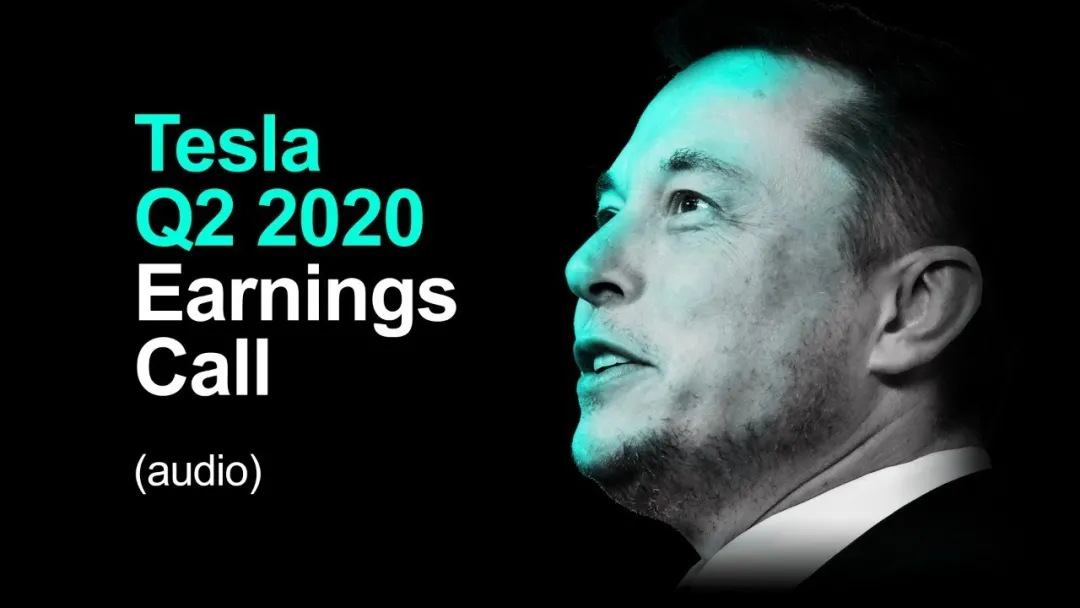
Elon wasn’t joking. Today, Tesla has established an actuarial team called Revolutionary Actuary. In the job description of Tesla’s “Revolutionary Actuary,” there are two requirements that are impressive. One is to collaborate with “data scientists,” and the other is to be proficient in Python and have application experience with open-source machine learning libraries and frameworks, such as Scikit-learn, PyTorch, and Tensorflow.
Tesla’s “data scientists” belong to the Fleet Analytics team. Tesla claims that this is a small but rapidly growing central team that empowers other business teams to improve products and make Tesla owners safer.
Tesla requires “data scientists” to have a solid foundation in machine learning and software engineering, with experience in developing various machine learning models, and processing petabyte-level time series data based on open-source technology.
Tesla has also released the position of “data scientists” in China. But for Tesla China, solving the problem of “data raw materials” may be more important than algorithms.
Elon stated at the World Internet Conference in Wuzhen in 2021 that Tesla has established a data center in China to store all data generated by Chinese businesses, including production data, sales data, service data, and charging data. All personal identity information is securely stored in China and will not be transferred overseas.
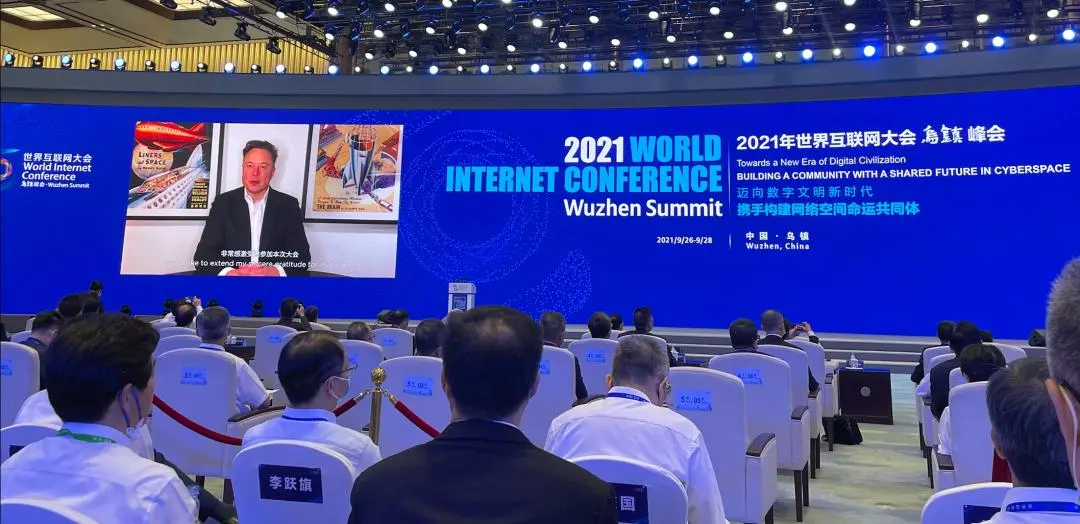
On the background board of the exhibition, Tesla explained to the Chinese government and consumers in more detail “how to handle customer personal information and vehicle data:”
Collection: Legality, necessity, and openness and transparency principles.
Storage: Completely stored in China, and stored securely through data encryption, authentication, access control, and other technologies.
Transmission: Data transmission is secured through data encryption and dedicated certificate systems.
Deletion: Users have the right to revoke their own data and data usage authorization.# Cross-border: Personal identity information does not leave the country. Important data that needs to be taken out is approved by the competent department.
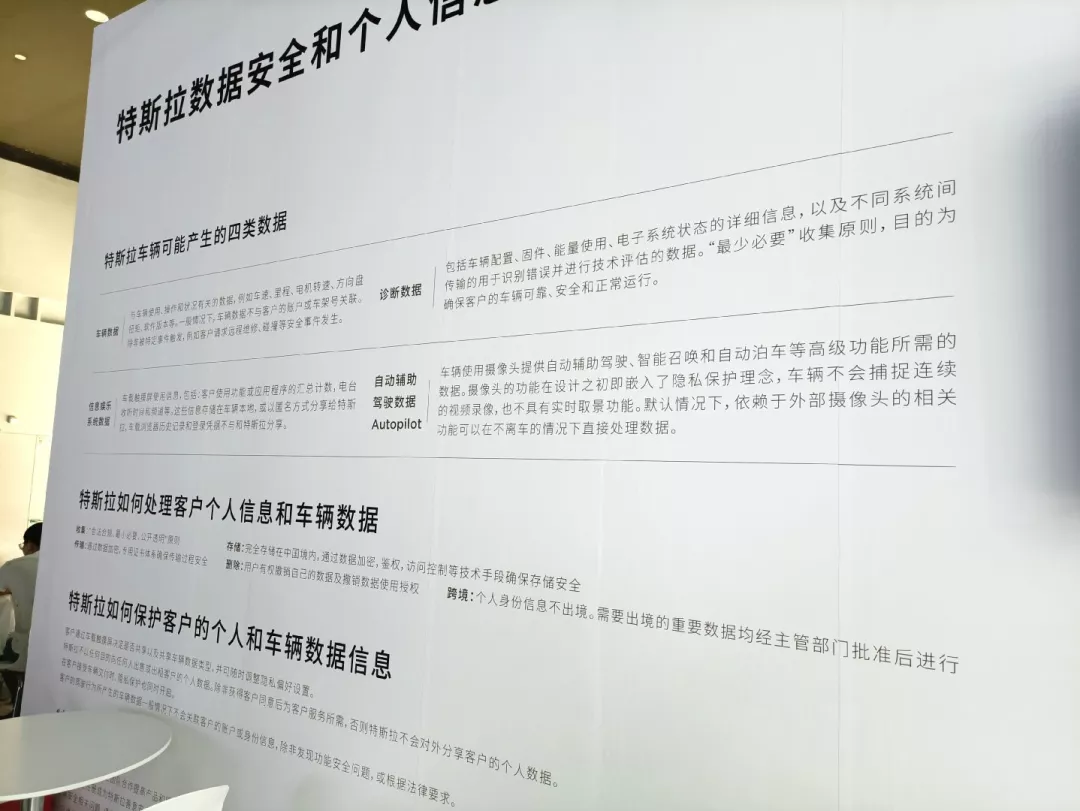
With the continuous growth of the fleet size, data-driven technology is increasingly being embedded in Tesla’s products and engineering.
In October 2016, based on the fleet data, Tesla began to use machine learning algorithms to drive the Autopilot assisted driving system to gradually increase the level of driving automation in more and more scenarios.
In October 2019, based on one million photos in the fleet data, Tesla trained a machine learning algorithm called Deep Rain neural network to recognize different intensities of rain and match the frequency of automatic wipers.
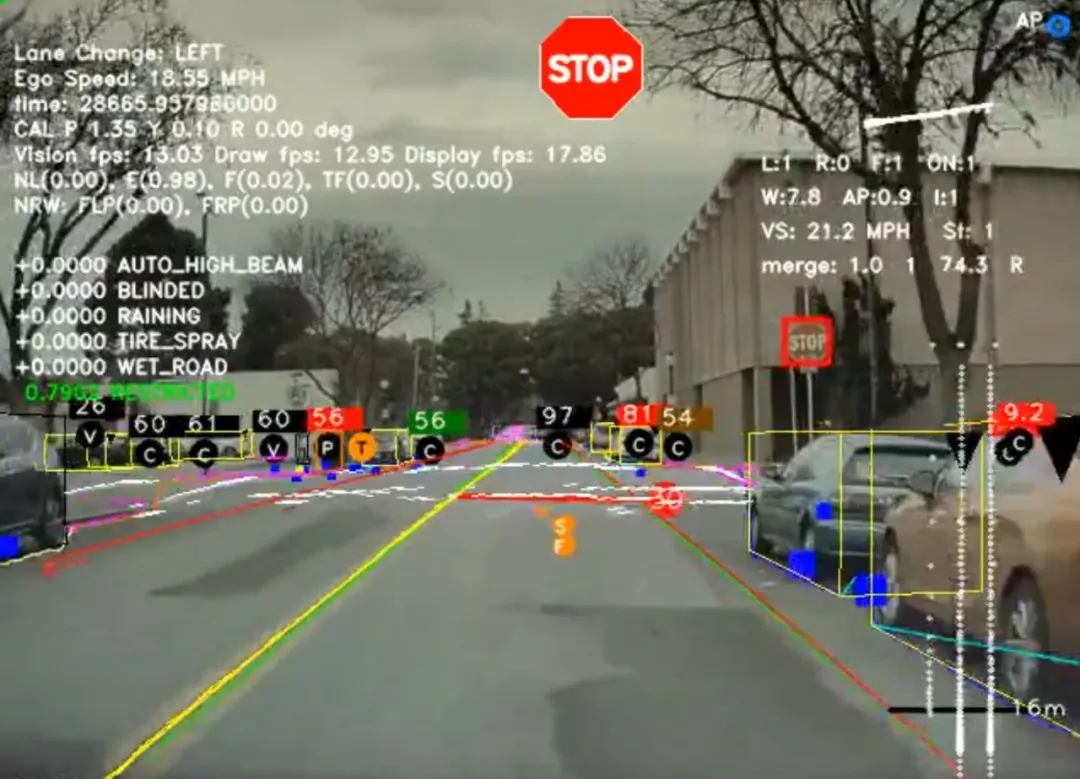
In May 2020, based on the cluster data of energy storage batteries such as Powerwall, Powerpacks, and Megapacks, Tesla launched the machine learning energy trading platform Autobidder and the machine learning energy optimization engine Opticaster. By May 2021, the Autobidder platform managed more than 1.2 GWh of battery assets, and Opticaster has accumulated more than 100 million hours of operating experience, providing millions of dollars in value to thousands of Tesla customers worldwide.
In September 2021, based on 6 billion miles of fleet data, Tesla launched the Driving Safety Assessment software “Safety Score”. According to Elon, before Tesla insurance, “Safety Score” will first evaluate and guide the expansion of the FSD Beta public beta. From next week, the FSD Beta public beta fleet will rapidly expand at a rate of 1,000 vehicles per day.
In September 2021, Elon accepted the proposal of Tesla owners to train a new deep neural network based on fleet data for automatically controlling the Tesla’s air conditioning under various working conditions, such as in traffic jams, wildfire smoke, dirt roads, and heavy rain.
In the past, whether it is assisted driving, automatic wipers, energy trading and scene optimization, or car insurance software, they were all running on “manually written rules by software engineers” (Software 1.0). At Tesla, “data-driven machine learning” (Software 2.0) is becoming ubiquitous.
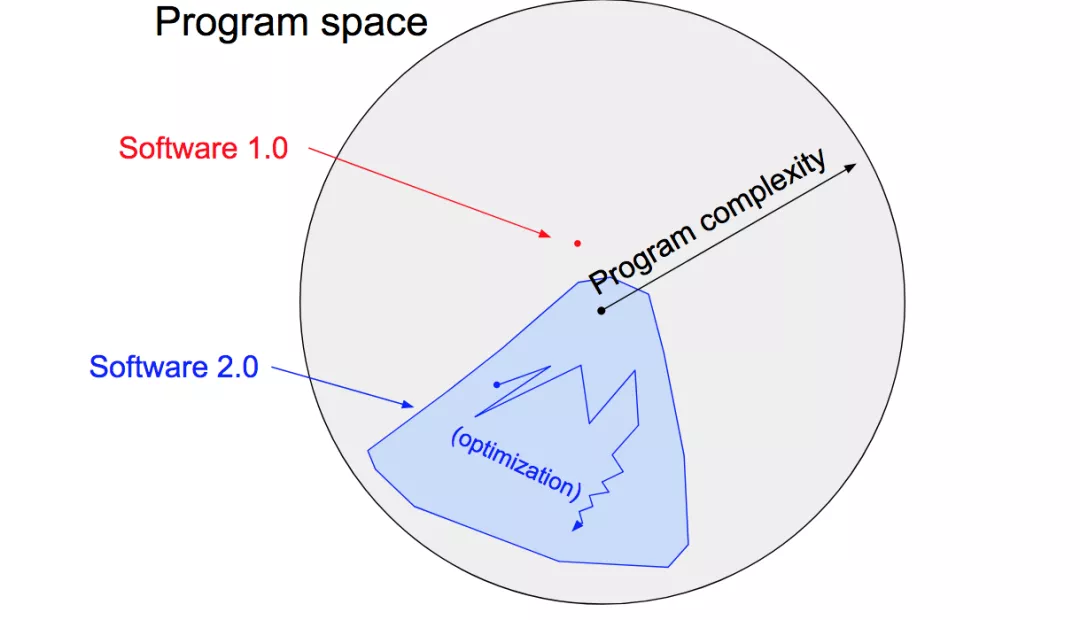 By defining the dataset and deep neural network architecture, as well as different weights for required behaviors, Tesla believes that the machine learning performance of the first version, which was extremely poor, will become stronger and ultimately surpass the rules written by human engineers.
By defining the dataset and deep neural network architecture, as well as different weights for required behaviors, Tesla believes that the machine learning performance of the first version, which was extremely poor, will become stronger and ultimately surpass the rules written by human engineers.
“More and more software 1.0 are being replaced by software 2.0. Software 1.0 is consuming the world, and software 2.0 is consuming software 1.0. In the long run, the future of this paradigm is bright because it is becoming increasingly clear that when we develop general artificial intelligence, it will be based on software 2.0.”
This is a new R&D philosophy proposed by Andrej Karpathy, Senior Director of AI at Tesla, in a blog post titled “Software 2.0” in 2017.
This article is a translation by ChatGPT of a Chinese report from 42HOW. If you have any questions about it, please email bd@42how.com.